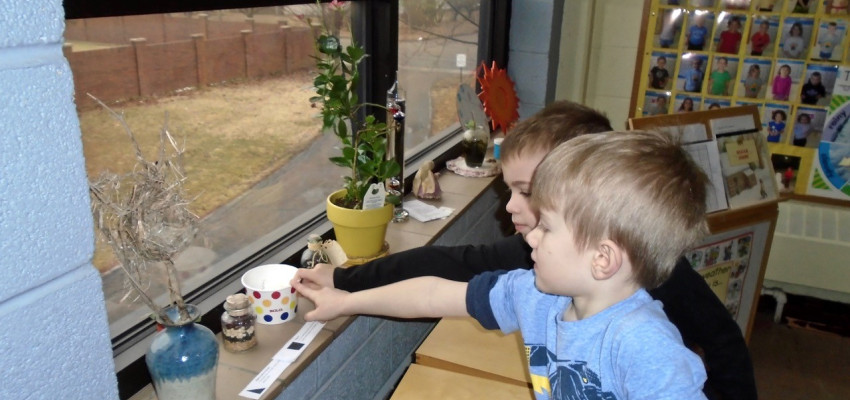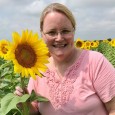By Linda Ditch on March 11, 2019
Fun At-Home Science Experiments
Get your little scientists' brains churning with these fun experiments that can be done at home

Science fun doesn't just have to happen at school.
I was a Montessori preschool teacher for a number of years. My last position was at Discovery School Montessori Preschool in Topeka. During the summer, we held a week-long science camp for children ages 3 to 7. The students had a great time trying out different scientific experiments while learning terms such as hypothesis, viscosity, and density.
Here are some of the activities we did which you could easily do at home. Before taking on any experiment, spend some time with the kids talking about the scientific method. First, ask a question (What will happen if we do this?). Next, come up with a hypothesis, which is a guess about what will happen. Then do the experiment and collect the data. Your kids will feel like scientists!
Many of the experiment ideas came from the Steve Spangler Science website. You can find many more on this page for kids of all ages.
Ice Cube Experiment
Take four ice cubes. Set one out in a dish. Place another in a dish and pour salt on top. Take the third cube and wrap it in newspaper, then place in a dish. Wrap the final ice cube in foil and place in a dish.
The question: Which ice cube will stay whole the longest?
Snow (or Ice Cube) Experiment
After a snow storm, scoop up 4 cups of snow into individual dishes. (Or you can use ice cubes.) Place each dish in different areas of your home.
The question: Which dish of snow will melt fastest?
Sink or Float
Collect various items around the house: Balls, coins, small toys, etc. Fill a large container with water (a cooking pot or bowl will work.) Drop each item into the water and see if it will sink or float. Chart the results.
The question: Which items will sink and which ones will float?
Viscosity
Using a white paper plate, place three dots at the top, in a straight line about two inches apart. Then draw a straight line across the bottom of the plate, about two inches down from the dots. Set the plate flat on the table. On one dot, place a drop of dish soap. On another, a drop of honey, and on a third, a drop of oil. Tilt the plate to see which liquid reaches the line last (in other words, which one has more viscosity, or is more viscous.)
The question: Which liquid has the most viscosity?
Six-Layer Density Column
You will need a clear glass cylinder with straight sides (a vase would work or a tall drinking glass. You also need four to eight-ounces each of honey, corn syrup, dish soap, water, vegetable oil and rubbing alcohol. Color the corn syrup and rubbing alcohol with a few drops of food coloring to create a colorful effect. Pour each liquid into the cylinder slowly and carefully in this order: honey, corn syrup, dish soap, water, vegetable oil and rubbing alcohol. When pouring in the honey, corn syrup and dish soap, be sure not to touch the sides with the liquid. Once you reach the water layer, use a food baster to slowly let the liquid slide down the cylinder wall. Wash the baster between the vegetable oil and rubbing alcohol layer. Once you’re finished, you will have a colorful tower of liquid from the densest on the bottom to the least at the top.
The question: Can you stack six liquids in layers on top of each other?
Ping-Pong Ball Races
Using painter’s tape, create a start and finish line on a wood or tile floor. Give each child a ping-pong ball and straw. Have them use the straw to blow the ping-pong ball from start to finish.
The question: How hard do you have to blow to move the ping-pong ball? Is it easier to control the ball by blowing harder or softer?
Film Canister Launch
Place a film canister on a plastic plate or tray. (You can use a pill bottle with a non-child-proof lid if you don’t have a film canister.) Fill the canister halfway with water. Divide an Alka-Seltzer tablet into four pieces. Place one of the pieces into the canister and quickly snap on the lid. Shake the canister for a quick second and set it on the plate. The tablet will create carbon dioxide gas, which will blow the lid off the canister. To make it even more fun, turn the canister upside down!
The question: What happens when gas builds up inside a closed container?
Skittles and Water
Separate a package of Skittles into same-color groups. On a white place, place the Skittles in groups of three of the same color along the edge an equal distance from each other. Then pour water into the center of the place so it covers the bottom half of the Skittles. Then watch as the colors dissolve from the candies.


